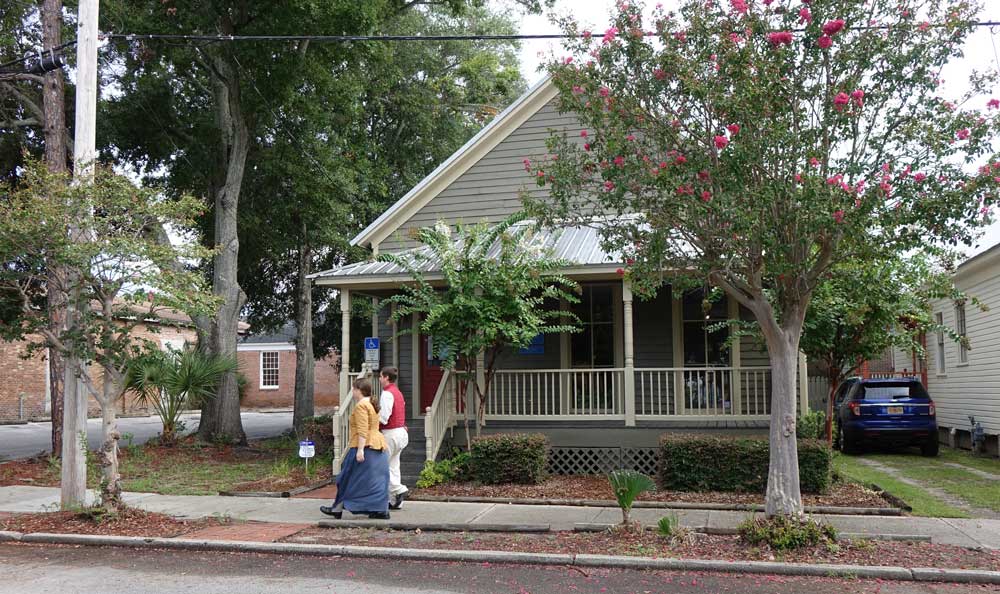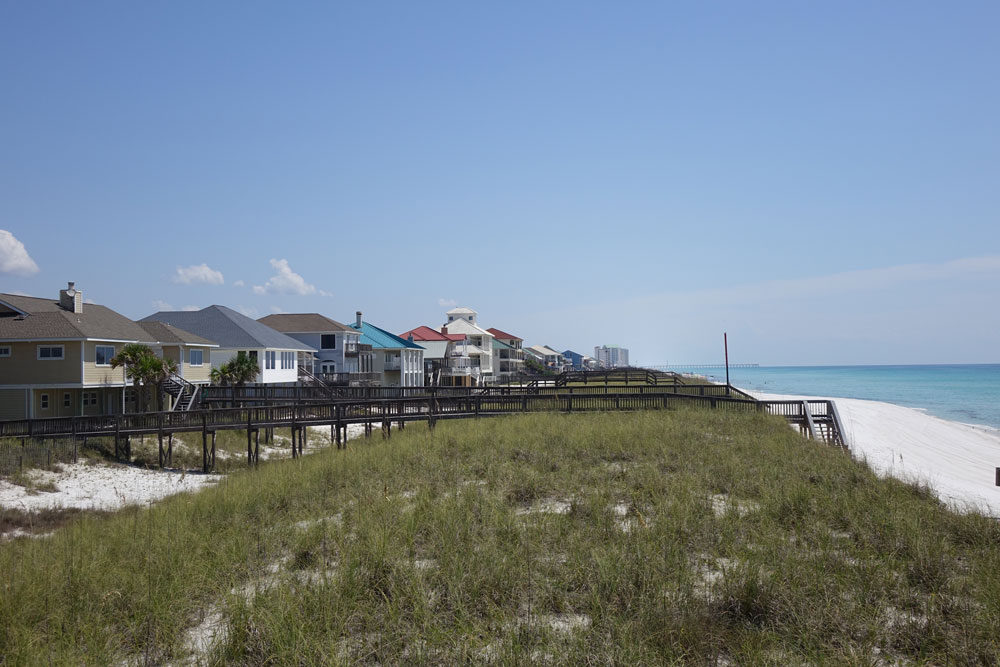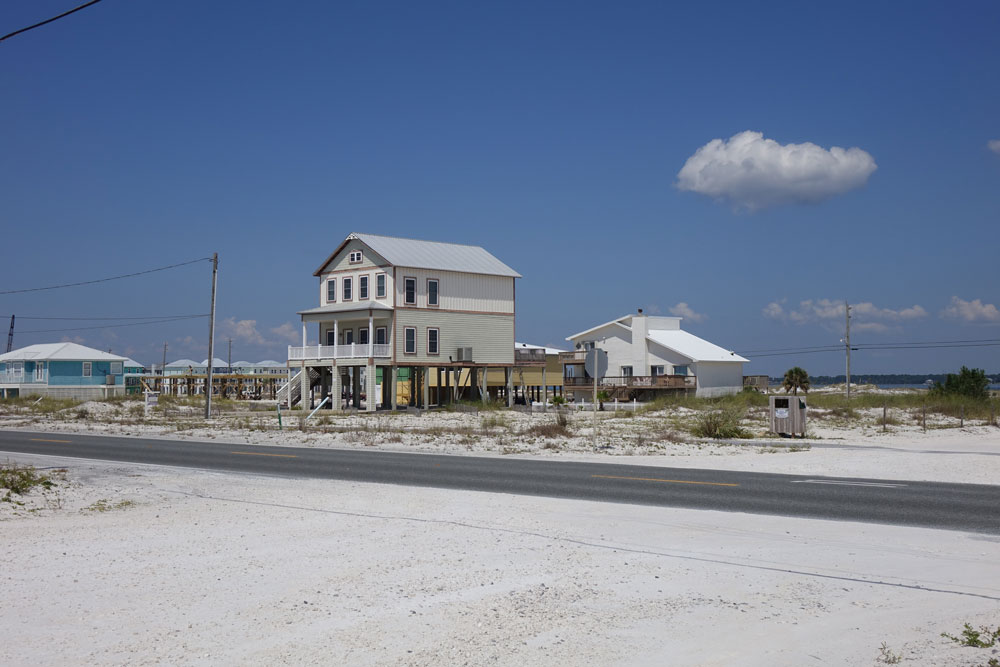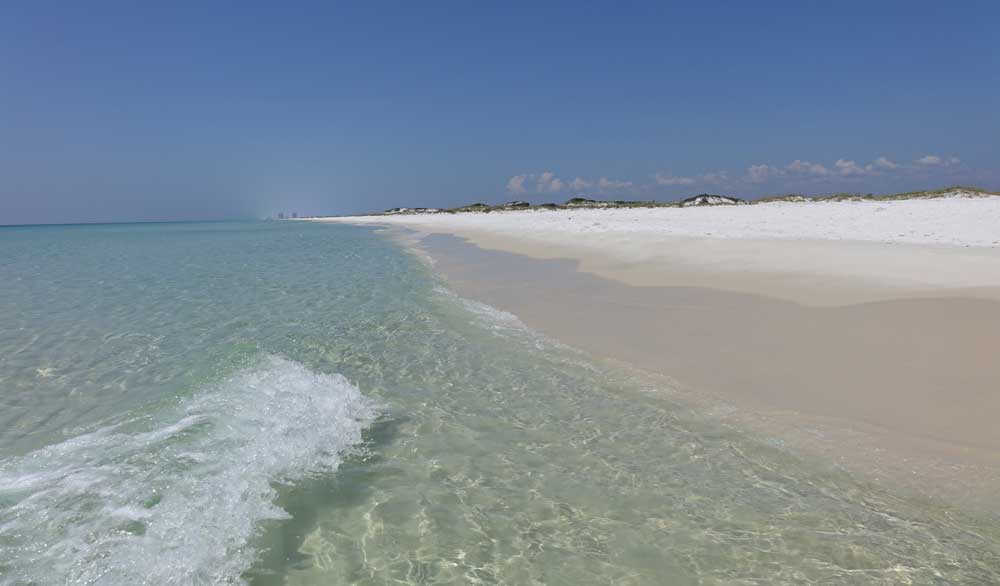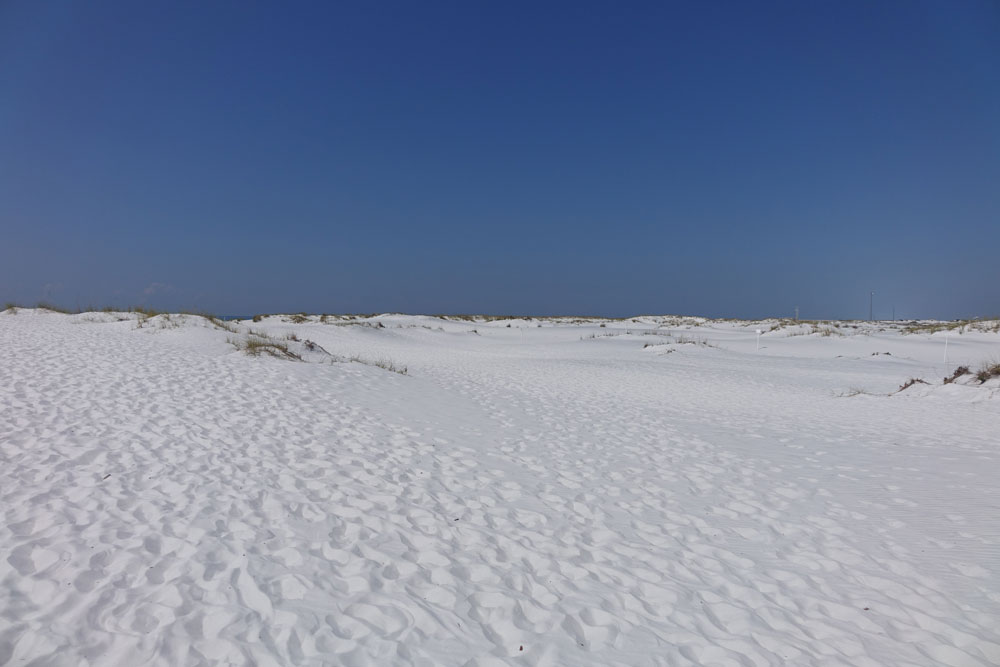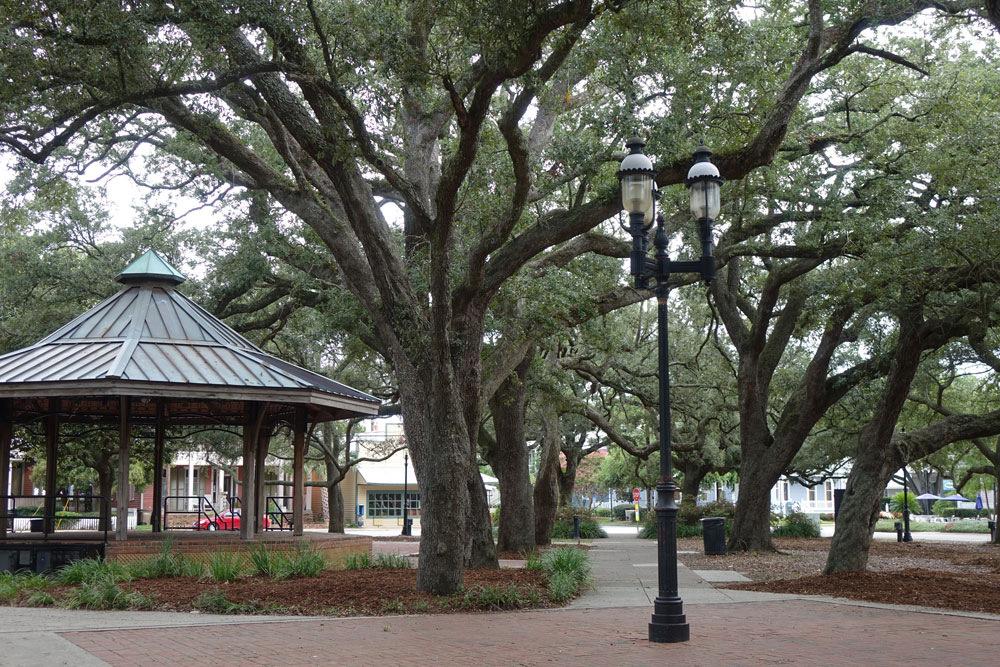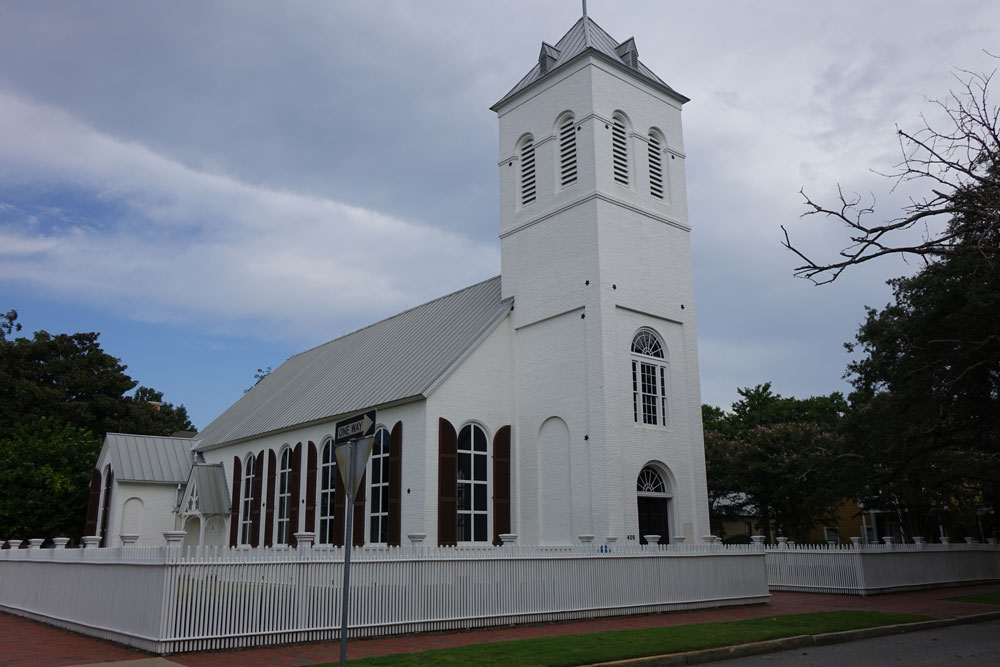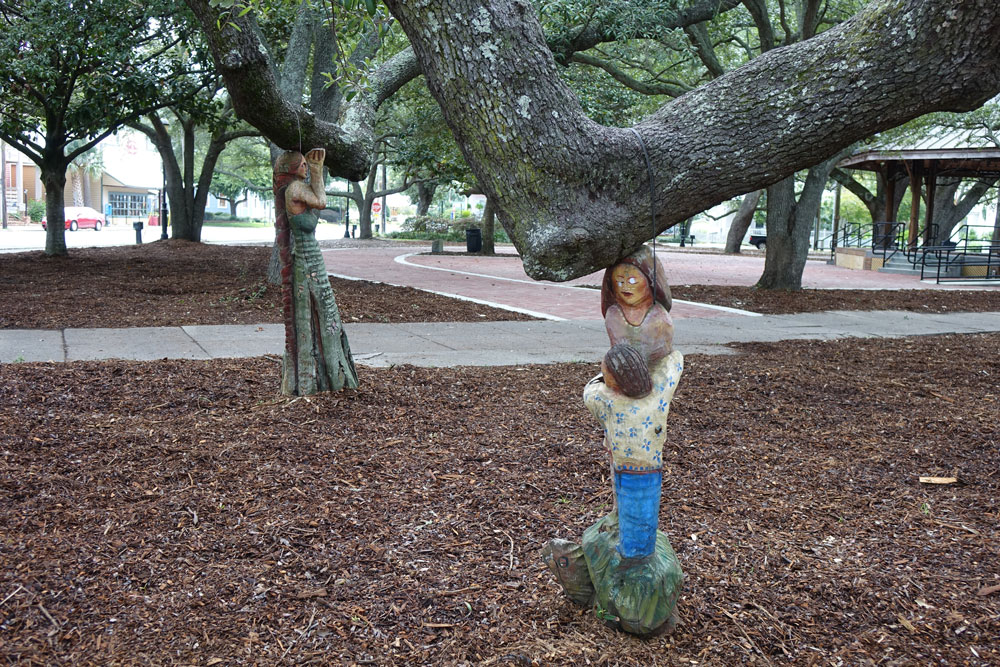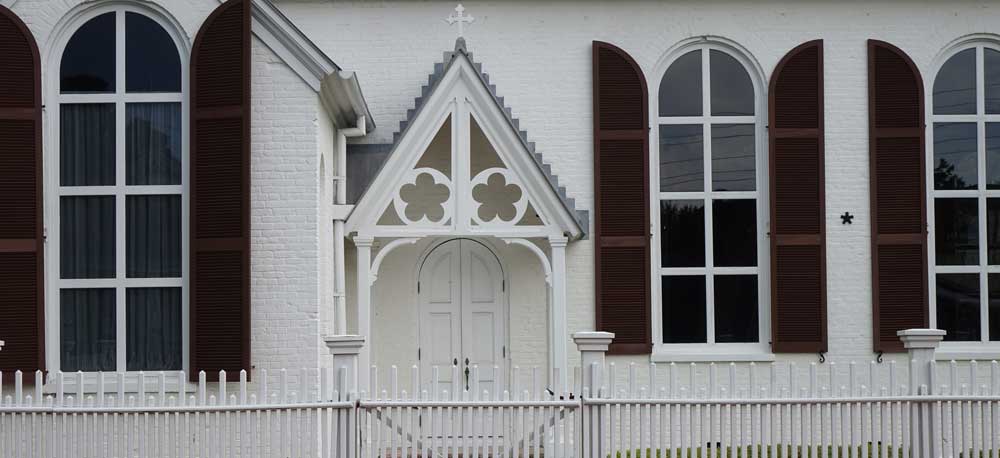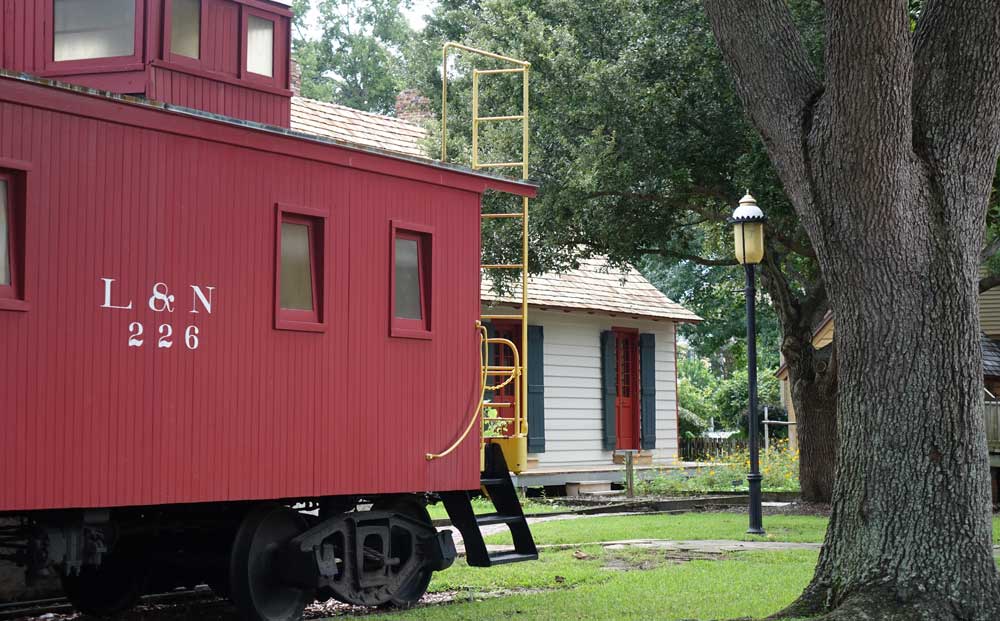Pensacola | Deep South with Vibrant History
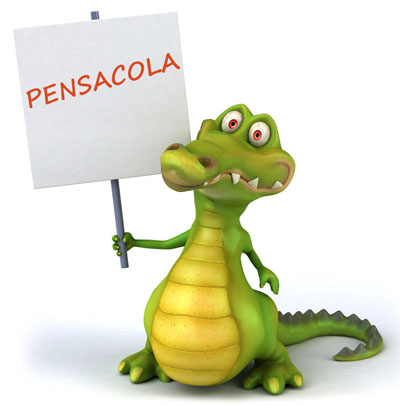
Florido loves Pensacola in the Panhandle, where snow-white beaches meet a turbulent past. Here you can stroll through the historic Seville Quarter, admire the legendary Blue Angels in the sky, or dip your toes in the finest sand at Pensacola Beach. Whether it’s history, sea, or adventure – Pensacola has a bit of everything. So, put on your sunglasses and let’s go!
Pensacola – the most Important at a Glance
- Historical hotspot – First European settlement in Florida (1559), fascinating history in Historic Pensacola Village
- Best travel time – March to October for warm temperatures & sunny beach days
- Top attractions – Pensacola Beach, Fort Pickens, National Naval Aviation Museum
- Spectacular shows – Home of the Blue Angels, the legendary US Navy aerobatic team
- Nature & relaxation – Stunning beaches with snow-white sand & turquoise water
Climate and Weather
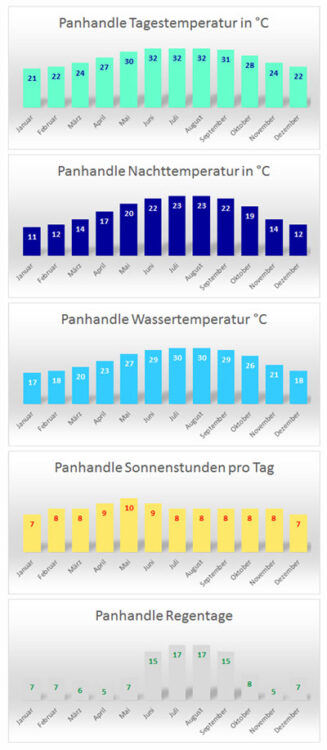
Information Route Planner
| Size | 39.6 mi² |
| Population | 53,724 (2023 estimate) |
| County | Escambia County |
| Coordinates | 30° 26 “N 87° 12” W |
| Area code | +1 850 |
| Tourist Info | Pensacola Visitor Information Center |
The Perfect Day in Pensacola
Early in the morning, when it’s not so hot yet, we take a short walk through the Historic Pensacola Village. If we’re more interested in history, we buy a ticket and also look inside the houses to see how people lived back then. Otherwise, just walking through the village is enough to get an impression of the time and take beautiful pictures of old America.
Afterward, we drive across Gulf Breeze to Santa Rosa Island to experience an unforgettable beach day. This is where one of the two parts of the Gulf Islands National Seashore begins. In this incredibly beautiful landscape, we spend a few hours relaxing in the turquoise, crystal-clear water of the Emerald Coast on the Gulf of Mexico.
We can especially enjoy the solitude of this breathtaking beach scenery. Therefore, food and drinks should definitely be packed. In the late afternoon, we drive back to Pensacola Beach. Here we can have a cozy dinner in one of the beautiful beach bars or restaurants.
The crowning finale of this relaxing day is the perfect sunset – either at Fort Pickens on the western tip and second part of the Gulf Islands National Seashore. Or – if you want to save the entrance fee – we simply stop at one of the many beach access points before the fort.
Activities Highlights around Pensacola
Nature Parks Beaches
Santa Rosa Island: Natural Paradise in the Gulf Islands National Seashore
Attractions
No post found!
Events

The Last Big City before Alabama
Pensacola is a city in the Florida sunshine that perfectly combines history and nature. Located in the far northwest of Florida, it delights travelers with its stunning location right on the Emerald Coast in Pensacola Bay. Those who want more than just typical tourist spots will appreciate the combination of culture, beach, and genuine Southern hospitality – especially through contact with locals who love to share their pride in the region.
A special highlight is the Pensacola Beach Gulf Pier – an ideal place to take sunset photos, go surfing, or simply watch dolphins. Anglers, walkers, or the whole family can relax here. Perdido Key, a barrier island west of the city, also scores with unspoiled nature and quiet beaches. Those who want to be active can enjoy excellent kayaking there or in Big Lagoon State Park, or explore the surroundings on hiking trails.
The attractions and tourist offerings in Pensacola range from historic forts to the impressive National Naval Aviation Museum to charming neighborhoods with Victorian houses. The area around the city center invites you to stroll – here you’ll encounter street artists, small galleries, and regular events that families can enjoy as well.
Pensacola is not an overcrowded vacation spot – and that’s exactly its appeal. You’ll find more tranquility, more authenticity, more fun in real Florida. And: The availability of accommodations ranges from beach houses to charming bed breakfasts to hotels with water views. In conclusion: Those looking for a city with a connection to nature, adventure, and local culture will find it in Pensacola. Whether sunbathing, surfing, exploring, or enjoying – here, Florida feels authentic.
History of Pensacola
- Beautiful old church from the founding era
Pensacola was founded as the first European settlement in what is now the United States in 1559 by Spanish settlers under Don Tristan de Luna. They arrived with seven ships and nearly 1,600 soldiers. Shortly after, a severe storm destroyed the settlement. Because of this, many people also consider St. Augustine, Florida, as the first European-settled place in the USA.
France occupied the Pensacola area during the War of the Quadruple Alliance, but returned the place to the Spanish after the war. In 1763, the city was transferred to the British, who further expanded the port in the following years. During the American War of Independence in 1781, the British, under the command of Bernardo de Gálvez y Madrid, conquered the city in the Battle of Pensacola.
Trade with England began in 1784 after the completion of the first privately financed dock. John Quincy Adams began construction of several forts and a shipyard for building warships in 1821. This brought a great boom to the region’s timber industry. In 1851, the first lumber shipment left the port.
The construction of the Florida Alabama + Georgia Railroad in 1835 connected the port of Pensacola with Montgomery and served to transport cotton from Alabama. Due to the economic crisis of 1837, the company went bankrupt and left an unfinished project.
Pensacola has three historic forts: Fort Barrancas, Fort McRee, and Fort Pickens. The latter was completed in 1834. On January 10, 1861, Florida seceded from the Northern states. Then the Confederates came from the evacuated fort to Pensacola and held it until May 1862. From 1885 to 1887, the Apache chief Geronimo was imprisoned in the fort.
Between 1875 and 1895, Pensacola was one of the most important lumber shipping points: About one billion linear feet of timber left the port during this time. Other export goods were cotton, grain, tobacco, flour, phosphates, resin, turpentine, coal, and iron.
- An old railroad in the Museum of Industry
In 1882, the railway line to Jacksonville was completed, allowing produced goods to be shipped by land as well. At the time of this further upswing, the city already had 13,000 inhabitants.
The stock market crash of 1929 and the subsequent Great Depression caused Pensacola and its port to temporarily lose its economic significance. It wasn’t until 1941 that things improved again, as the demand for coal for the Allies in World War II increased. In 1942, grocer Calvin Todd ensured that the previously private port was transferred to public ownership. This was completed in 1943 with the establishment of the Port Authority. Three major fires destroyed large parts of the docks in 1948, 1955, and 1958. In the same year, a complete renovation of the port was decided.
Until then, Cuba was Pensacola’s most important trading partner. However, in 1960, this trade completely ceased. By 1965, this crisis was also overcome, so that 98 percent of all processed timber was exported through Florida’s ports. Pensacola alone accounted for 63 percent of exported peanuts. Incidentally, the city was briefly the government capital of Florida before Tallahassee.
In today’s times, you encounter warm-hearted residents with incredible perseverance. Natural disasters and the military have shaped them. After Hurricane Ivan in 2004, Tropical Storm Dennis in 2005, and in the same year the most destructive of the three, Hurricane Katrina, they have repeatedly rebuilt their homes and infrastructure. They live with the awareness that another storm could destroy everything again. Militarily, the Blue Angels are based here. Every American pilot of World War II was trained here.






